Crazy ideas Soviets imagined for space colonization (PICS)
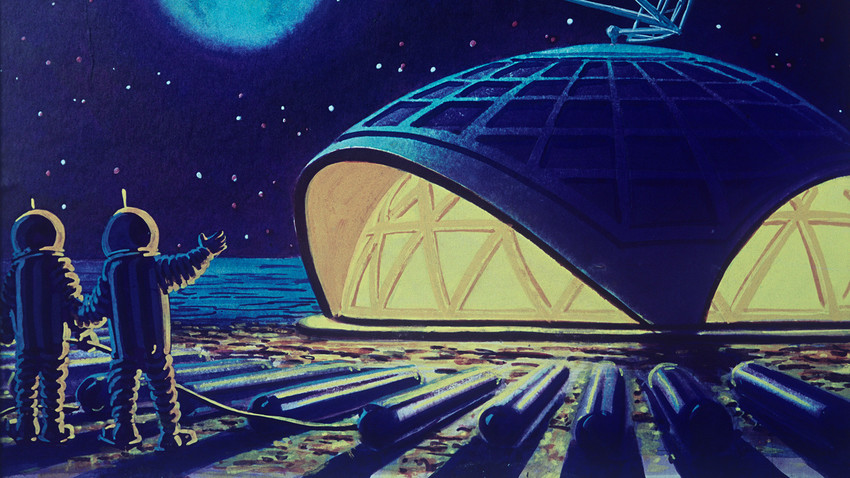

The first man stepped on the Moon in 1969. Surprisingly, on this occasion, Soviet visionaries underestimated the capabilities of human technological development. In 1958, a Soviet Magazine ‘Tekhnika-Molodezhi’ (Eng. “youth engineering”) speculated that the first man would not step on the surface of the Moon before the end of the 20th century. Before this could happen, the magazine forecasted, scientists would land a satellite on the Moon (which happened in 1959) and detonate a nuclear weapon on its surface for scientific purposes (obviously, this never happened in real life).
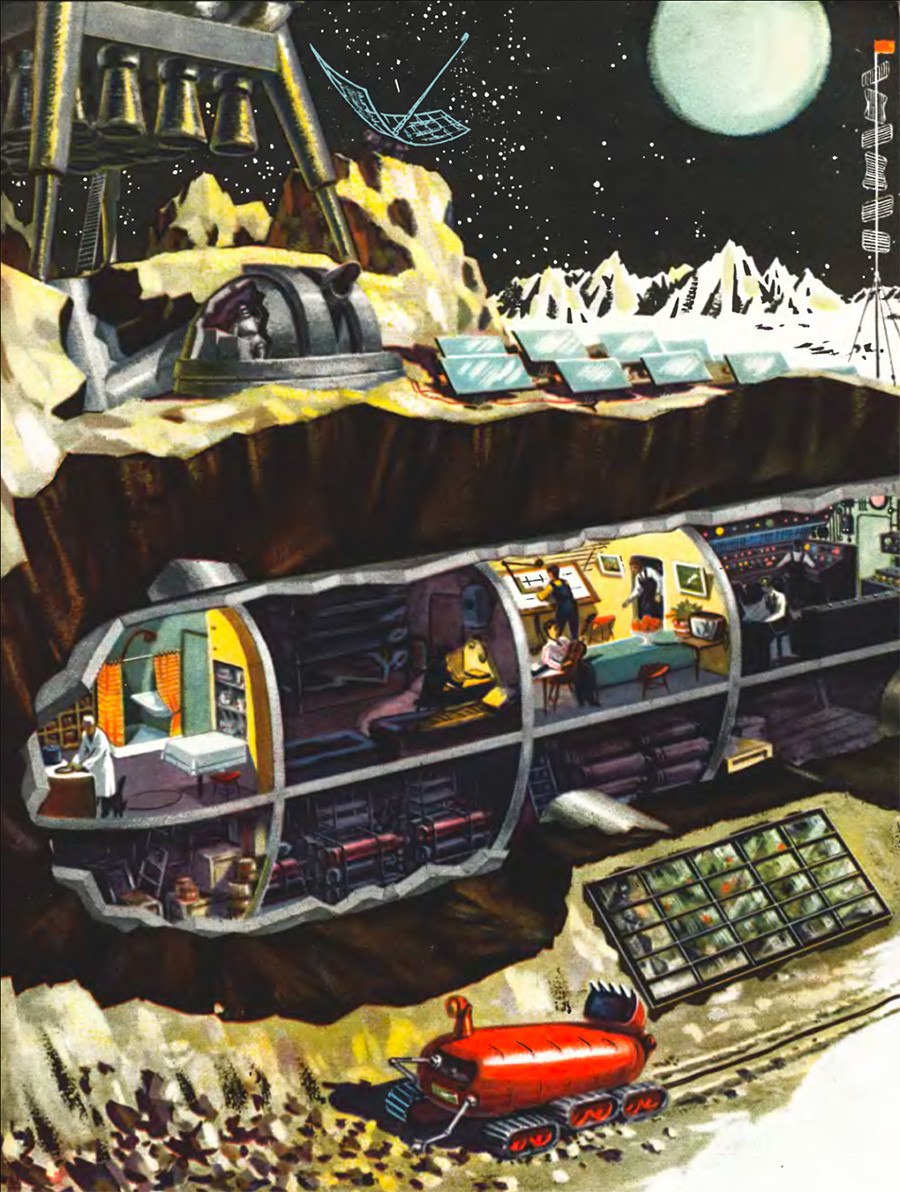
Soviet artist Denis Dashkov envisioned a future moon station to be built under the surface of the Moon to protect its inhabitants from meteoroids and extreme temperatures fluctuating from +120°C to -150°C.
According to the artist, the station would be powered by solar-powered batteries located on the surface of Earth’s satellite, as well as the entrance to the station via a shaft. According to the plan, explorers would have lived on the top tier of the station, while air, food, and other necessary supplies would be stocked on the lower tier.
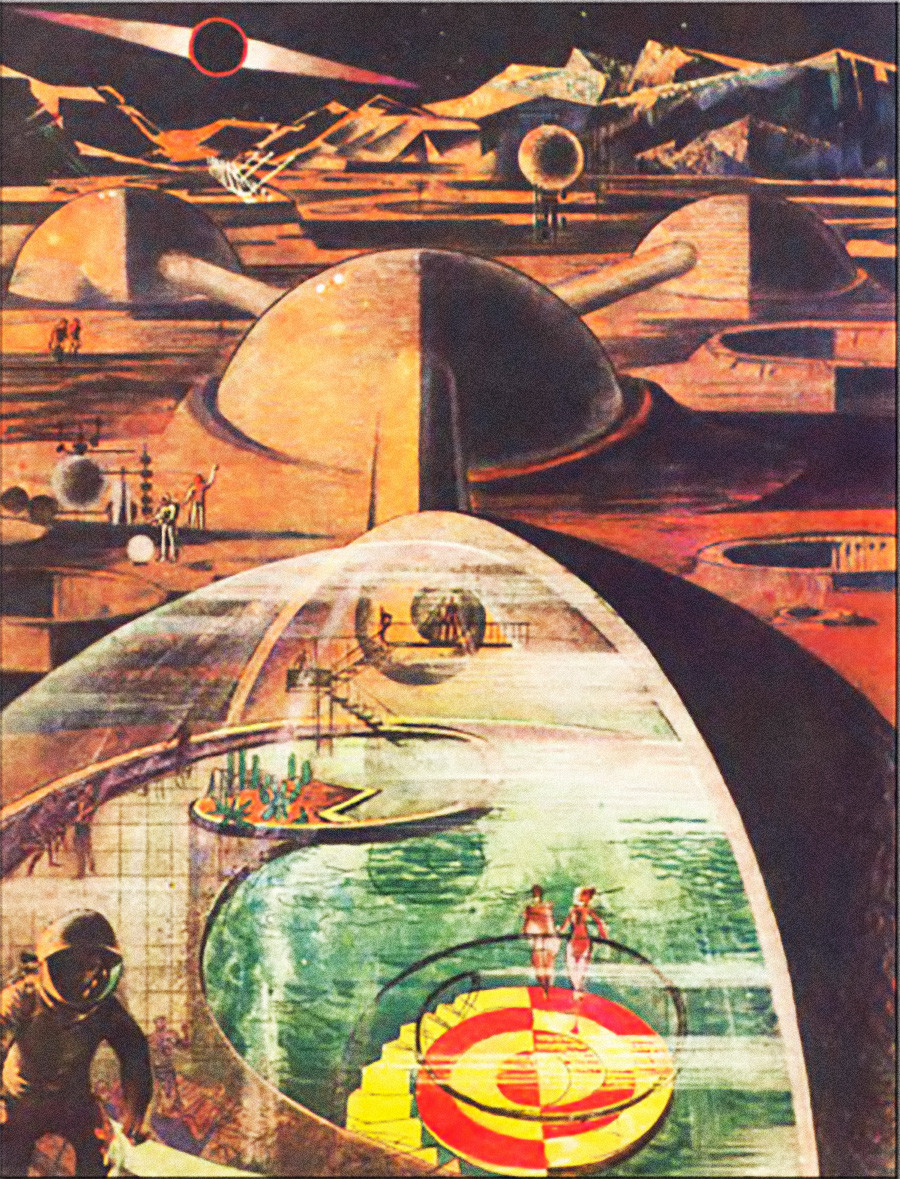
Another artist, Fyodor Borisov, envisioned that the future Moon stations would look like spherical houses covered by natural soil found on the Moon’s surface to protect them from the elements and severe conditions on the satellite.
The O’Neill cylinder, a futuristic concept of space colonization — proposed by American physicist Gerard K. O’Neill in his 1976 book ‘The High Frontier: Human Colonies in Space’ — inspired the Soviet Union’s visionaries: many of them translated and circulated the idea on the pages of Soviet science magazines.
In particular, ‘Tekhnika-Molodezhi’ described the design of the O'Neill cylinder as: “An autonomous space colony for 10,000 to 20 million people will be created in the form of two connected cylinders 7.5 kilometers in diameter. Their rotation will create a gravity similar to the Earth’s. Agriculture and animal husbandry will develop inside the station and on the outer agronomic rings.”
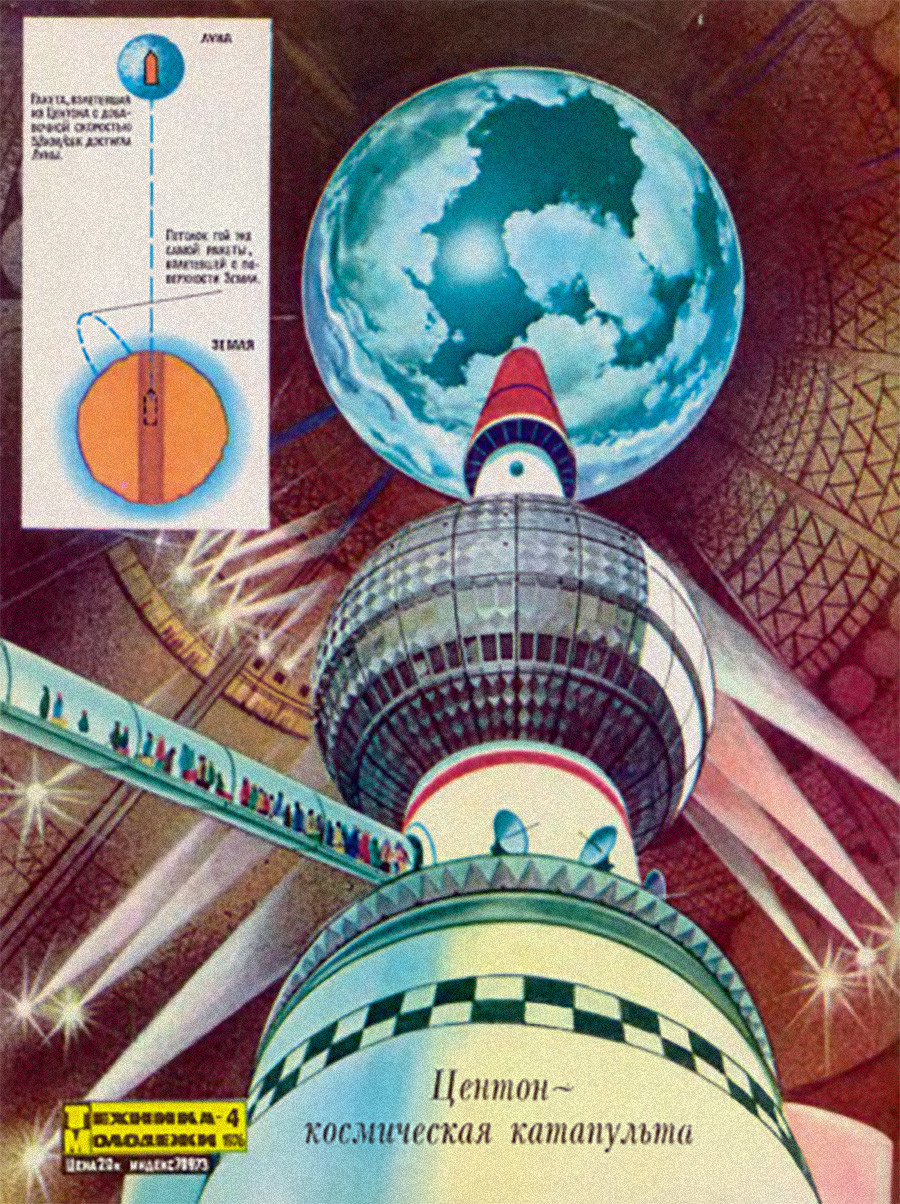
The same magazine outlined the design of a futuristic logistic project called ‘Cento’. The idea is akin to what was depicted in the 2012 Hollywood movie, ‘Total Recall’: a tunnel that pierces the Earth and allows for the transportation of people and cargo much faster.
The Soviet writers calculated that such a tunnel could have been built in 48 years. Had it been constructed, the tunnel would have allowed travel through the center of the Earth in just 43 minutes, due to gravitational forces that would, according to the Soviet futurists, power the capsules. The Centro project was also considered as a new method of launching rockets into space since the Soviet dreamers thought that gravitational forces would do the job better than expensive and supposedly less powerful reaction engines.
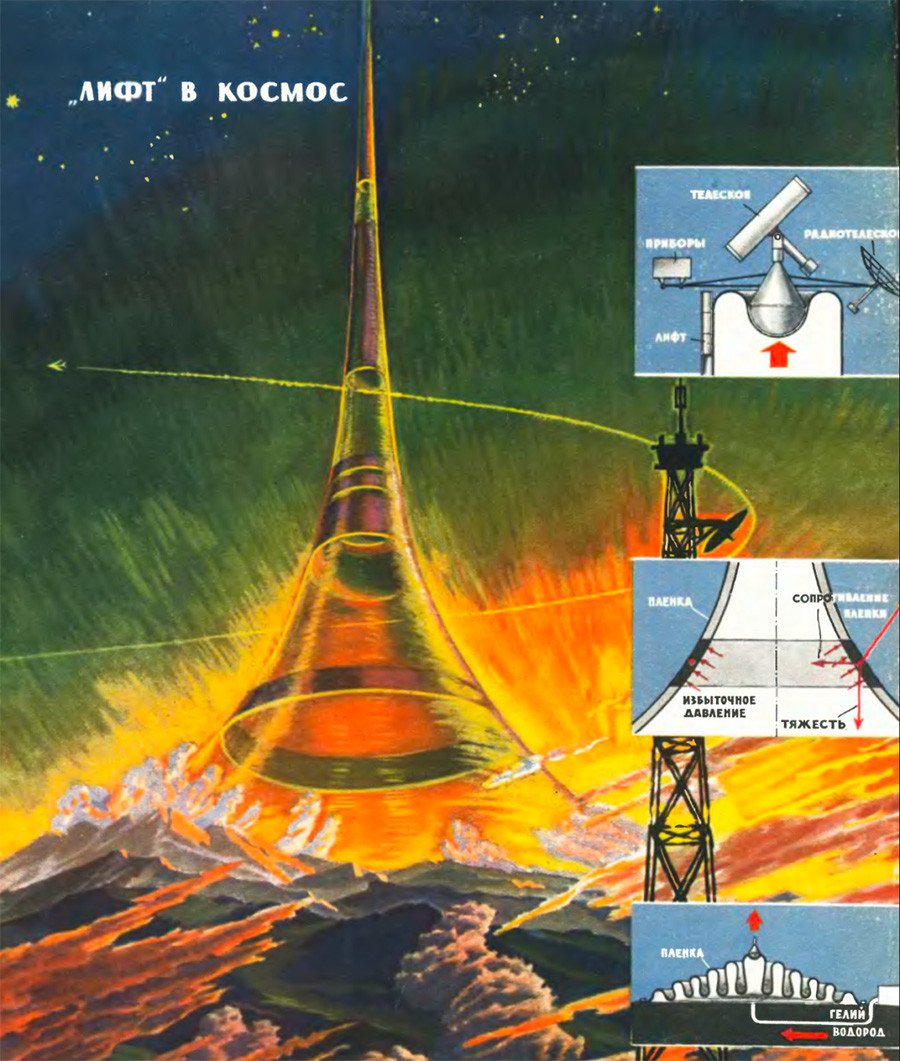
The idea of a space elevator first proposed by Russian rocket scientist and pioneer of the astronautic theory, Konstantin Tsiolkovsky, was later developed into a brave futurist project that appeared on the pages of the popular science magazine in 1959. The author proposed the construction of a 35,800 km tall tower for delivering scientists and equipment into space and, maybe, launch spaceships from the top of the tower to solve the problem of Earth’s gravity forever. Needless to say, this futuristic dream was never realized.
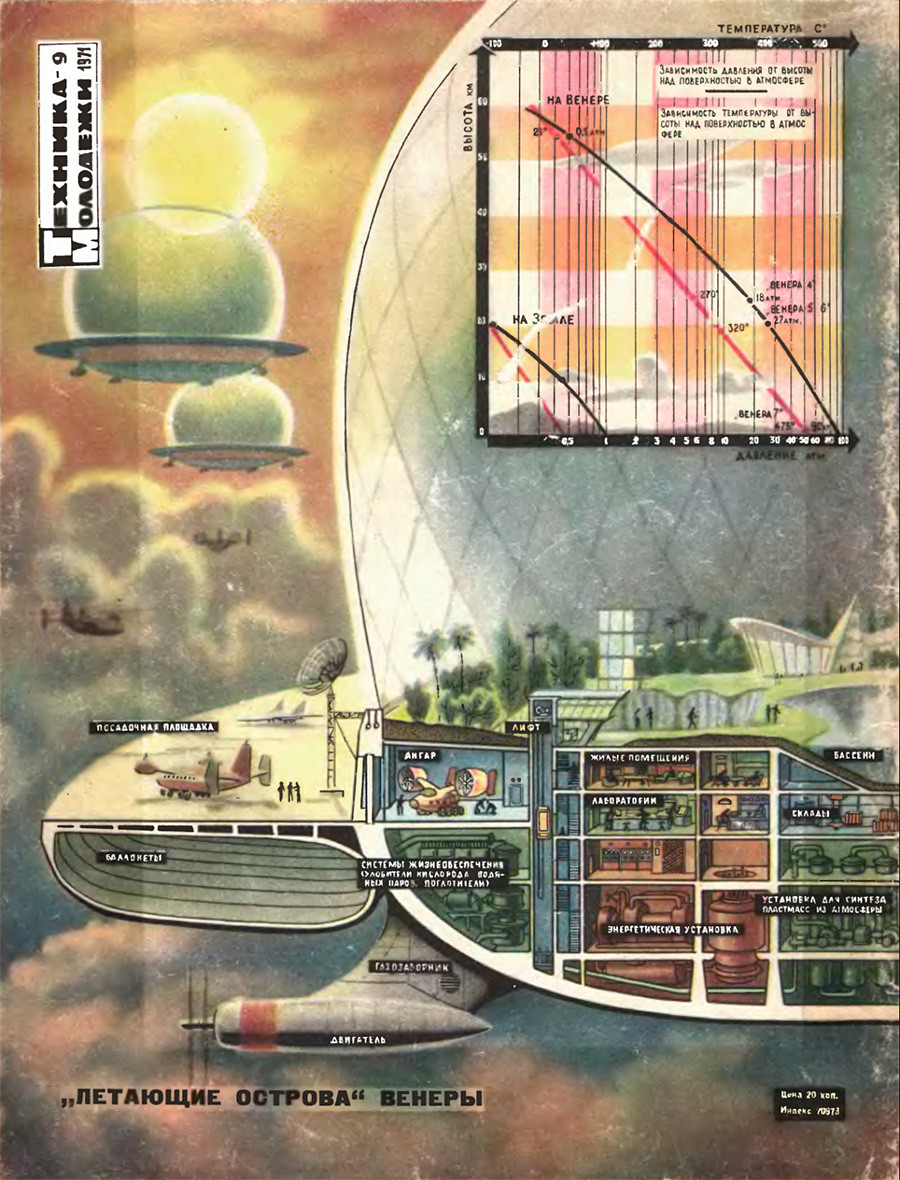
Soviet engineer Sergei Zhitomirsky, exploring the idea of space colonization by men, proposed an ambitious idea of floating cities located in the atmosphere of Venus. He thought the technology applied in the construction of zeppelins and hot air balloons could be used to keep the stations afloat some 50 or 60 km above the surface of Venus, where temperature and other conditions were deemed to be comfortable for humans. The project was romantically named ‘The floating islands of Venus’.
Click here to read about a true story involving a Soviet cosmonaut who was left behind in space when the Soviet Union collapsed.
If using any of Russia Beyond's content, partly or in full, always provide an active hyperlink to the original material.
Subscribe
to our newsletter!
Get the week's best stories straight to your inbox